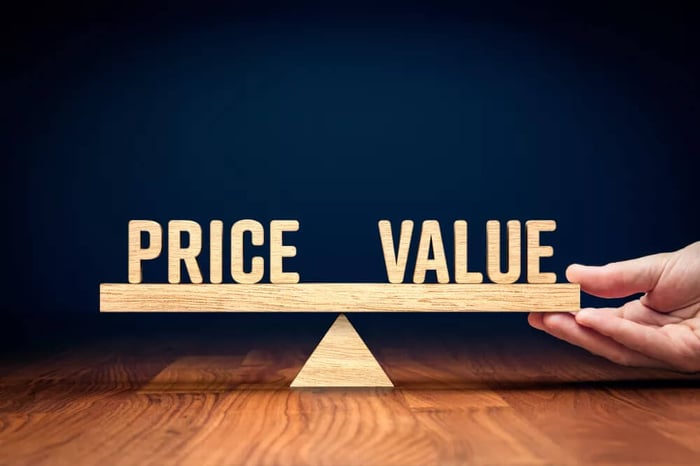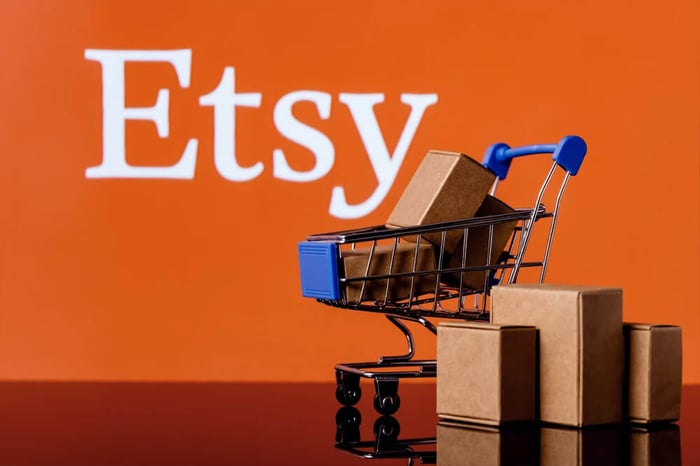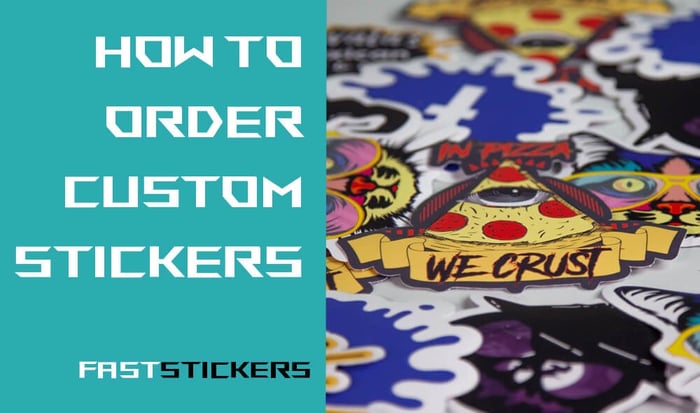Pricing Your Product Right
Consumers have more access to information than ever before. Because of that, pricing strategies are an increasingly important aspect of your product and business. We live in a time that people are almost guaranteed to price shop, and compare your product and pricing to that of your competitors.
That doesn’t mean that you need to be priced below the competition. But you need to show and communicate the reason that your product is worth paying more for.
Pricing Strategies
There are a few ways to price your item. I recommend considering the following variables, and triangulate a price based on all of the them.
1. Cost Based Method: This method uses your product acquisition or production cost, and then adds a profit margin on top. If you buy stickers in bulk from CustomStickers, you can get a low price per sticker. For example, our 100 count 3in sticker option brings the price per sticker down to $0.37.
You then have to factor in the time it takes to fulfill and process orders. You can get a good estimate of this by tracking the hours you spend over a week fulfilling orders, responding to messages, and updating listings. Divide the hours by the number of orders you fulfill in a week. Keep in mind that the average time will drop as you become more efficient, and move from setup to maintenance of your listings and shop. Stickers are pretty simple to pack and fulfill, so let’s say it takes 5 minutes on average per order to pack and ship and respond to miscellaneous messages. If you want to make sure you are paying yourself a baseline of $20 per hour, 5 minutes per order means you should factor in a cost of $1.67 per order.
Now you are up a cost of right around $2 per order. Let’s now add an additional margin of ~30% and set our price at $3 per sticker.
2. Competitor Pricing: This method involves researching competitors to see what price they are charging for similar products. You’ll come up with a range. From there you want to think about what your strategy and selling points of your product vs the competition is. Also think about how you want to position your product (value vs premium).
For stickers, it’s helpful to look at Etsy, but also other shopping platforms such as CustomStickers.com, Redbubble.com, and a google search.
We might find prices ranging from $1 up to $6 for custom single stickers. At a lower price, we can undercut the competition, but the perceived quality may also go down. Our stickers are extremely high quality, so we don’t want to put ourselves at the bottom of the pricing here. Our Bee design is fairly simple, and didn’t require a significant amount of time to create, so that gives us a data point that points towards a lower price. On the other hand, if you are selling your own artwork that took a significant amount of time to create, and that people can’t pick up anywhere else, you would want to consider a higher price.
In our case, the Bee sticker is very high quality, laminated, waterproof, etc, but the design isn’t particularly unique or special. So middle of the road pricing at $3 is probably good.
3. Demand Pricing: This pricing model requires some data. So it’s best to implement as a phase two of pricing. The idea is to organize your products into categories based on demand, and then raise or lower the price accordingly.
Say we have 10 unique sticker designs. Over time, clear best sellers will emerge. Perhaps 2 of our stickers are best sellers, where they’ve sold 50+ in a single month. Then we might have 5 average sellers that have sold 20-50 copies in the month. Finally let’s assume we have 3 stragglers that have sold just a few copies.
Clearly there is a lot of demand for the best sellers, so we can try raising the price and see what it does to the sales quantity. Start with $0.25 or $0.50. If we still maintain our sales volume, we could try increasing the price again.
For the average sellers, we’ll leave them at $3.
For our bottom tier stragglers, we can drop the price to $2.50 and see if the sales volume picks up. If it doesn’t, we could try dropping it once more. Maybe two of them pick up in sales but one doesn’t. For the two that picked up in sales, we leave them at the lower price. We are still covering our costs for time and materials.
For the single sticker that didn’t see increased sales even when dropping the price, we should put it back to $3. This is because clearly it isn’t a pricing issue that is holding back buyers. More likely it’s just a design that has narrow appeal.
Demand pricing can optimize your sales revenue and profit, and is usually worth doing once you have a good chunk of sales data.
4. Other factors and options: Bundle Pricing and Loss Leading Pricing. You should consider other ways to drive up your average order value. In other words, there is a lot of value to having people spend $20 on a bunch of stickers, rather than those who just buy one single $3 sticker.
The time you spend fulfilling a $20 order of 10 stickers (for example) is far less than if you were to fulfill 10 individual orders. For that reason, it’s worth offering bundled stickers for a lower price per sticker.
For example, you could let people buy all 10 of your sticker designs for $20. This is a win-win for you and the customer. The customer pays less per sticker, and it requires less time and money for you. It will cost you $7.40 for the stickers (based on our $0.37 per sticker price), and it will likely still only cost you $2 to fulfill the order, barely more than the $1.67 we estimated for a single sticker. Now you are netting over $10 in profit for that bundled order.
Loss Leading pricing is a concept where you offer a certain product at a price below cost, to drive traffic to your store with the hope that they offset that loss by buying other items as well. So you could offer a sticker as an add-on for $1 if they purchase other stickers. Or you could do a BOGO, buy-one-get-one.
The Significance of Optimal Pricing for Ecommerce Products
When it comes to ecommerce, pricing plays a crucial role in determining the success of a product. Setting the right price is essential for attracting customers, maximizing profits, and maintaining a competitive edge in the market. In this article, we delve into the significance of achieving optimal pricing for ecommerce products.
-
Meeting Customer Expectations: Finding the right price point for your ecommerce products is crucial for meeting customer expectations. Customers are increasingly savvy when it comes to online shopping, and they have access to various platforms that allow them to compare prices effortlessly. If your prices are too high, you risk losing customers to competitors offering better deals. Conversely, if your prices are too low, customers may perceive your products as cheap or of inferior quality. Striking the right balance is key to satisfying customers and driving sales.
-
Maximizing Profitability: Effective pricing strategies can significantly impact your ecommerce business's profitability. By carefully analyzing market trends, customer demand, and production costs, you can determine the optimal price that maximizes profit margins. Pricing too low may result in minimal profits or even losses, especially if your costs outweigh the revenue generated. On the other hand, pricing too high can limit your customer base and lead to missed sales opportunities. Finding the sweet spot that aligns with your target market and ensures healthy profit margins is essential for long-term success.
-
Gaining a Competitive Advantage: In the highly competitive ecommerce landscape, pricing can serve as a differentiator that sets you apart from your rivals. Offering competitive prices can attract customers who are seeking value for their money. Conducting thorough market research and monitoring competitor pricing allows you to position your products strategically. By identifying pricing gaps or niches in the market, you can gain a competitive advantage and attract customers who are seeking affordability without compromising quality.
-
Enhancing Customer Perception: The price you set for your ecommerce products can influence how customers perceive your brand and offerings. Premium pricing can create an image of exclusivity and quality, appealing to customers looking for top-tier products. In contrast, lower prices can signal affordability and accessibility, attracting a wider audience. Understanding your target customers' preferences and aligning your pricing strategy accordingly can enhance their perception of your brand, driving customer loyalty and repeat business.
-
Adapting to Market Dynamics: Ecommerce is a dynamic and ever-changing market, influenced by various factors such as seasonality, trends, and economic conditions. Having flexibility in your pricing strategy allows you to adapt to these market dynamics and seize opportunities. For instance, offering limited-time promotions, discounts, or bundle deals can create a sense of urgency and drive sales during peak shopping seasons. By keeping a pulse on market trends and adjusting your pricing strategy accordingly, you can optimize revenue and stay ahead of the competition.
Conclusion
Pricing strategies can be confusing at first. But with a little data and some experimentation, you can optimize your pricing to drive up your profit margins.
Keep in mind, that you should not set it and forget it. Continue to fine-tune your prices over time, keep an eye on competitors, and watch what happens to your sales. For a larger guide on starting an Etsy shop, check out our blog post here.






